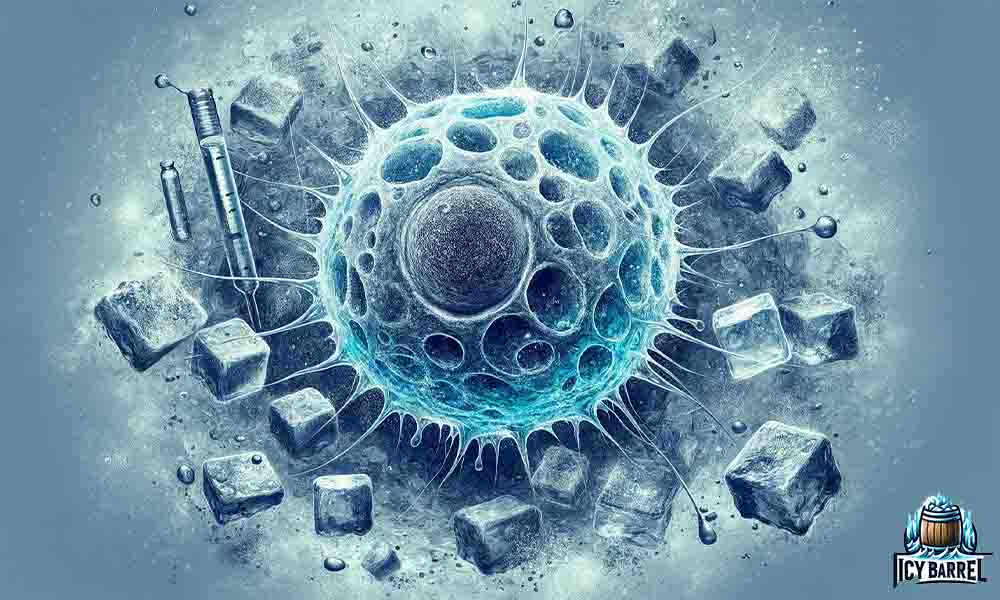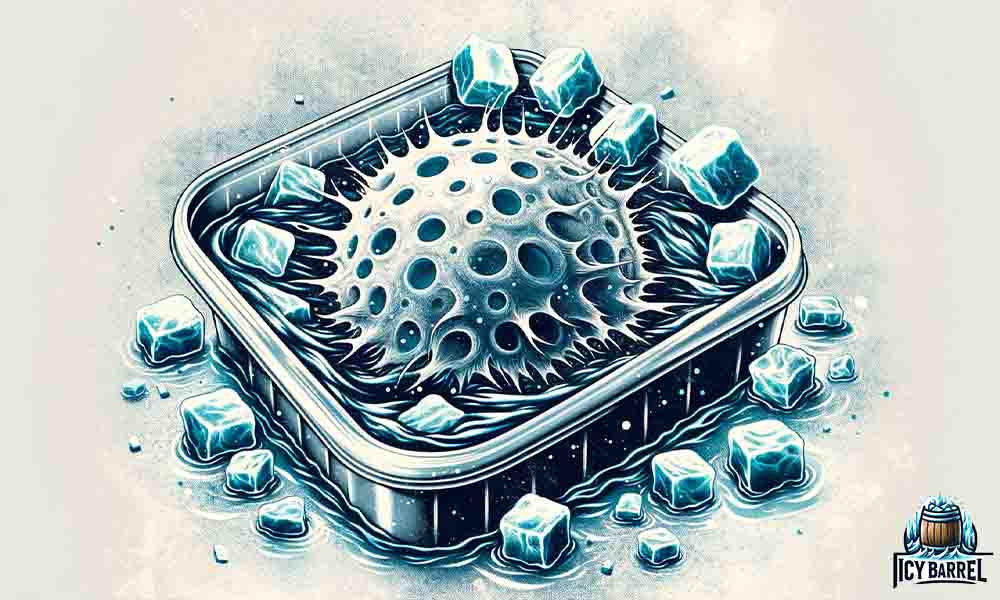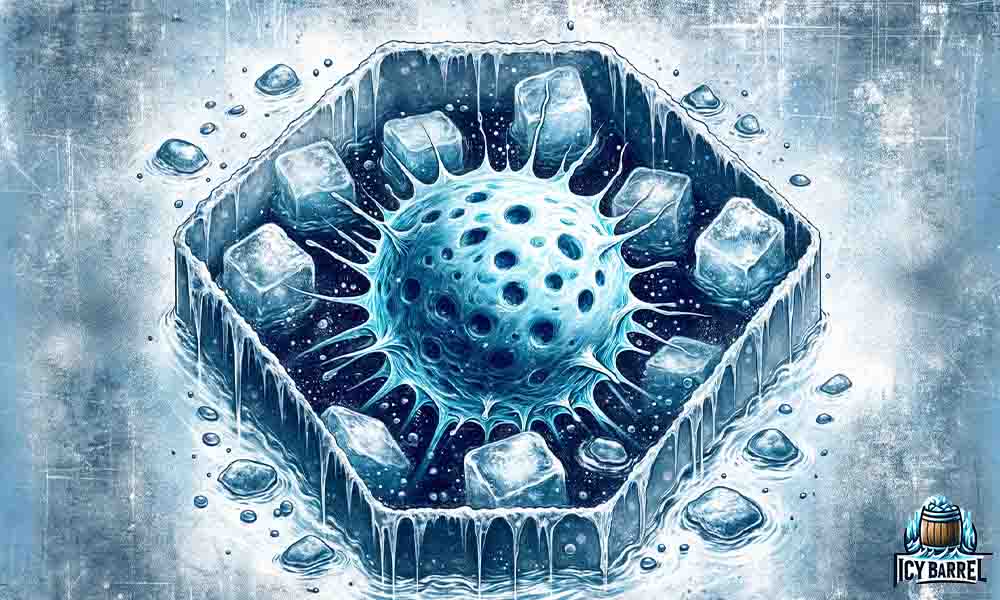Dive into the chilly world of ice baths and discover the hidden powers of cold shock proteins (CSP). It’s not just about the invigorating sensation; it’s a science-backed method to boost your health. From aiding in exercise recovery to potentially fighting cancer, CSPs are your body’s unsung heroes in the face of stress.
You’ve likely heard about the rejuvenating effects of cold water immersion, but it’s time to explore how it goes beyond just a refreshing dip. In this article, we’ll unravel the benefits of CSPs and how you can harness them to maintain muscle mass, reduce inflammation, and even promote nerve regeneration. Get ready to chill out and learn how to make these proteins work for you.
What Are Cold Shock Proteins
Activation and Function
Cold shock proteins (CSPs) are multifunctional RNA/DNA binding proteins distinguished by their cold shock domains. They regulate a wide array of cellular processes, including transcription, splicing, and translation. CSPs are activated by stress such as cold temperatures. When your body experiences a drop in temperature, these proteins spring into action, orchestrating cellular responses essential for survival. They’re not only involved in immediate responses but also play a role in the long-term adaptation of cells to cold stress.
Relationship with Ice Baths
Ice baths directly correlate with the activation of CSPs. Submerging your body in cold water causes a physiological reaction that includes the activation of CSPs. The process is a natural defense mechanism against hypothermic stress, reducing inflammation and aiding recovery by modulating blood flow to your muscles. It’s the body’s ingenious way to cope with the extreme temperatures and safeguard your vital processes.

YB-1
Y-box binding protein-1 (YB-1), a well-characterized CSP, has diverse biological activities. YB-1 regulates key molecular activities related to cell communication and may influence the development and progression of diseases like cancer. Interestingly, YB-1 is also secreted via exosomes, adding another layer to its functionalities. It’s been linked to the activation of NF-kappaB in conditions like colon cancer, indicating its potential as a target for therapeutic interventions.
Lin28A/B
While not as emphasized in current discussions, proteins like Lin28A and Lin28B are important CSPs with implications for your health. They’re known for their roles in development and are involved in cellular repair processes. Lin28 proteins’ interaction with CSPs suggests their potential in enhancing recovery and regeneration, which could be especially relevant following stress or injury.
CIRP
Cold inducible RNA-binding protein (CIRP) emerges as a significant actor under stressful conditions. CIRP steps up during hypothermia and other stresses, acting as a cellular safeguard. It’s a critical piece in understanding how your body mitigates damage when exposed to severe cold and is an attractive candidate for advanced therapeutic strategies.
RBM3
RBM3 is another CSP that’s gained attention for its neuroprotective properties. Considering its role in synaptic plasticity and prevention of neuronal death, RBM3 offers promising perspectives for conditions like Alzheimer’s disease. The potential of RBM3 in medicine is substantial as it supports nerve regeneration and health, essential for both recovery from injury and staving off neurodegeneration.
Other Cold Shock Proteins
Emerging research is uncovering a wider spectrum of CSPs with diverse functions. Though information on many of these proteins remains limited, the discoveries thus far underscore the complexity and importance of the CSP family. Scientists continue to investigate these proteins’ individual and collective contributions to health, revealing their multifaceted roles in your body’s defense systems.
How to Activate Your Cold Shock Proteins

Practice Cold Water Immersion
Ice baths, also referred to as cold water immersion (CWI), have been a staple in athlete recovery and are becoming increasingly popular for their wide-ranging benefits. CWI involves submerging your body in cold water, typically below 60 degrees Fahrenheit, for short periods to stimulate the production of CSPs. The route of exposure to the cold is vital—it’s about the shock your system receives when immersed, which helps in the potential reduction of inflammation and muscle soreness post-exercise.
Beyond physical recovery, CWI may also impact mental health positively. This connection might seem counterintuitive, but the stress induced by the cold water exposure can trigger noradrenaline release in the brain, fostering an anti-depressive effect. Notably, this method was historically employed by ancient civilizations, indicating its longstanding perceived therapeutic benefits.
Take a Cold Shower
An alternative to full cold water immersion is adopting the practice of taking regular cold showers. To start activating your CSPs, ensure the water temperature is below 16°C (60°F). Dive in for at least 30 seconds, aiming to build your tolerance and eventually progress to a few minutes. Those early morning cold showers, brutal as they may seem, can jolt your body awake, invoking a cascade of CSPs and setting the tone for an energized day.
If an immediate dive into frigid waters is daunting, consider a contrast shower routine. It involves alternating hot and cold water in cycles—heat for three minutes followed by the cold for one minute. Renowned athletic trainers recommend this post-workout for a balanced recovery: the warmth relaxes and dilates blood vessels, while the cold constricts them, creating a pumping action beneficial for muscle repair.
Exercise in Cold Weather

Working out in colder conditions provides another avenue to trigger cold shock proteins. The physiological demand combined with the ambient chill can upregulate CSP production. This method is not only naturally invigorating but also adds an environmental dimension to your fitness regimen.
When exercising outdoors in the cold, your body must work harder to maintain core temperature, a process that inherently puts CSP mechanisms into play. If getting into an ice bath or taking cold showers isn’t appealing, a brisk jog or outdoor boot camp session in chilly weather is an effective alternative. Just make sure you’re appropriately dressed to avoid hypothermia.
By integrating cold exposure into your recovery or wellness routine, you’re not just tapping into ancient therapeutic practices, you’re also engaging with a natural method to potentially enhance physical and mental health. Whether it’s taking on an ice bath, embracing cold showers, or challenging yourself with a frigid workout, you’re harnessing the power of CSPs to promote overall well-being.
How Do Heat and Cold Shock Proteins Differ?
When you’re looking to enhance your physical and mental well-being, understanding the difference between heat and cold shock proteins can guide you to the right temperature-based regimen. Heat shock proteins and cold shock proteins both play crucial roles in maintaining cellular homeostasis and protecting cells from stress-related damage.
Heat shock proteins like Hsp70s are released in response to high temperatures. To trigger these proteins, your body needs to be exposed to conditions that cause hyperthermia. Activities such as sitting in a sauna or an infrared sauna are common methods of inducing the necessary heat stress for heat shock proteins to take action.
In contrast, cold shock proteins don’t require your body to undergo such extremes. They are activated when your body temperature dips slightly below the normal body temperature of 37°C (98.6°F). This means you can activate cold shock proteins more easily, without the need for inducing actual hypothermia. Whether it’s taking a cold shower or diving into an ice bath, you can stimulate these proteins at a temperature just a few degrees cooler than your body’s baseline.
Remember that while both types of proteins serve to protect and repair cells, they are solicited through markedly different environmental stimuli: One thrives in heat, the other in cold. Engaging in activities that fluctuate your body temperature can be a practical approach to promoting the benefits of both heat and cold shock proteins. As you explore these temperature extremes, pay attention to how your body responds. Tuning into these cues can help you determine the most beneficial practices for activating these powerful proteins without pushing your body into discomfort.
Cold shock proteins stand out because they’re part of a highly adaptable survival mechanism honed throughout evolution. They enable you to experience consequential health benefits, such as reduced inflammation and muscle soreness, potentially improving your mental health, all without going to the extremes of temperature.
Conclusion
You’ve explored the intriguing world of cold shock proteins and their potential to boost your health. By simply allowing your body temperature to dip just below its comfort zone you’re tapping into a natural defense mechanism with impressive perks. Remember it’s not about extreme temperatures but rather a gentle nudge to your system that could lead to reduced inflammation and less muscle soreness. It’s clear that your body’s response to the cold has more to offer than just a shiver—it’s a gateway to enhanced well-being. Embrace the chill and your body might just thank you for it.




